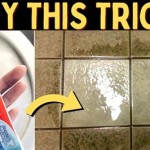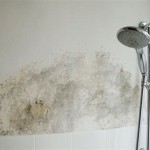Essential Aspects of Bathroom Sink Drain Tarnished
Maintaining the pristine condition of your bathroom sink is crucial, and the drain plays a vital role in ensuring proper functionality and hygiene. A tarnished bathroom sink drain can be an eyesore and indicate underlying issues that need attention. Understanding the essential aspects of bathroom sink drain tarnishing is paramount for addressing this problem effectively and preventing its recurrence.
The term "bathroom sink drain tarnished" refers to the discoloration and loss of luster on the metal components of the drain, typically due to oxidation or corrosion. Addressing this issue requires a comprehensive approach that considers factors such as the material of the drain, the type of finish, the cleaning methods employed, and the overall usage patterns.
Material Composition
The material composition of the bathroom sink drain significantly influences its susceptibility to tarnishing. Common materials include brass, stainless steel, and chrome-plated brass. Brass drains are more prone to tarnishing due to their copper content, which reacts with oxygen and moisture in the environment. Stainless steel drains are more resistant to tarnishing but can still develop discoloration over time. Chrome-plated brass drains offer a protective layer against tarnishing but require careful maintenance to prevent scratches or peeling.
Type of Finish
The type of finish applied to the bathroom sink drain also affects its resistance to tarnishing. Polished finishes, such as mirror finishes, are more susceptible to tarnishing as they expose more of the underlying metal to the environment. Brushed finishes, on the other hand, create a less reflective surface that is more resistant to tarnishing and scratches.
Cleaning Methods
Improper cleaning methods can contribute to the tarnishing of bathroom sink drains. Harsh chemicals, abrasive cleaners, and steel wool can damage the protective finish and accelerate corrosion. Instead, opt for mild cleaning agents specially designed for bathroom fixtures and use soft cloths or sponges to avoid scratching.
Usage Patterns
The frequency and manner in which the bathroom sink is used can impact the likelihood of drain tarnishing. Leaving water standing in the sink for extended periods can promote the growth of bacteria and mineral deposits, contributing to tarnishing. Regular use and proper drainage help prevent stagnation and reduce the risk of tarnishing.
By considering these essential aspects, you can develop an effective strategy to prevent and address bathroom sink drain tarnishing, ensuring a pristine and functional bathroom environment.
1878 Restoring Very Tarnished Plugholes The Mock Turtle

What Can I Do With Spot Of Rust On The Chrome My Bathroom Sink Hometalk

Fix And Prevent Corrosion On A Bath Tub Drain Hometalk

How To Replace A Rusty Sink Drain Howtolou Com

The Drain Thing In My Bathtub Is Horrible Looking As You Can See Hometalk

How To Remove Rust From Stainless Steel Advice Bob Vila

Sink Drain Tarnished Tiktok Search

Sink Drain Tarnished Tiktok Search

How To Clean A Tarnished Copper Sink So It Shines Like Penny

How To Replace A Rusty Sink Drain Howtolou Com







